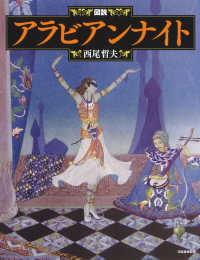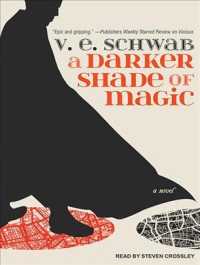- ホーム
- > 洋書
- > 英文書
- > Performing Arts
Full Description
Shakespeare and Disability Theory serves as a guide to the intersections of Shakespeare studies and disability studies. Intervening in contemporary critical debates about recognizing disability representations in dramatic texts, Genevieve Love explores the stakes of embodying disability in Shakespearean performance.
After tracking the emergence of critical disability studies as a field, Love maps out how claims from disability theory influence and continue to transform Shakespeare studies. Through methodologies of literary disability studies, the volume provides fresh readings of a range of Shakespeare texts, illustrating the power of disability theory to reframe familiar ideas in Shakespeare and to illuminate unfamiliar ones. While the archetypal Richard III provides an extended case study that highlights performance choices by disabled actors and contemporary appropriations of disability, Love's close readings move beyond Shakespeare's representations of singular disabled characters. Plays such as Julius Caesar and King Lear display the expansive networks through which we recognize Shakespearean disability, including neurodiversity. Subsequent chapters underscore disability's intersectionality, recognized through dynamics of incorporation, care, and community in Othello and Henry V, and demonstrate how plays such as The Tempest and Titus Andronicus mobilize disability as a resource for theatricality through stage properties and theatrical prostheses. All these approaches point to engagements with literary and theatrical disability representations that challenge outmoded methods for Shakespeare students, scholars and practitioners.
Contents
Introduction: Recognizing Shakespearean Disability
Chapter 1: Forms of Disability
Chapter 2: Disability and the State: Intersectionality, Inclusion, Resistance
Chapter 3: Disability and the Stage: Theatricality, Embodiment, Prosthesis
Chapter 4: Disability Studies and the Richard III Performance Tradition
References
Index








